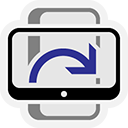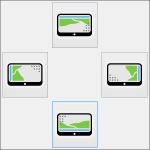FileBookmark
Once again, it is time for one of my little tools, which the world does not need (but I do). The idea is simple: think of a series of files in one directory, e.g. music files of a audio book or video files of a TV series. Every once in a while you watch/listen to one of the files and days later you do not remember, which was the last file you have seen. My tool registers to the context menu of the Windows Explorer and provides a simply way of setting a bookmark at the file in the directory. The bookmark is an empty file with the same name, additionally using an extra file name extension). The whole thing is no shell extension, but a simple, normal DotNet application which writes to the right places in the registry. Simple, not elegant, but working.
And, just because I can, here is the source code::
[60.2 KB; MD5: 84071f778ccb81b0c39101577a3fa204; More Info]



